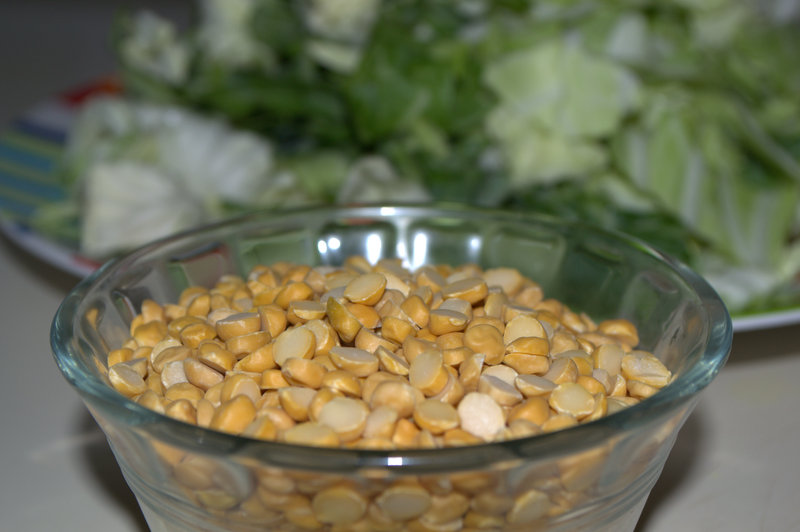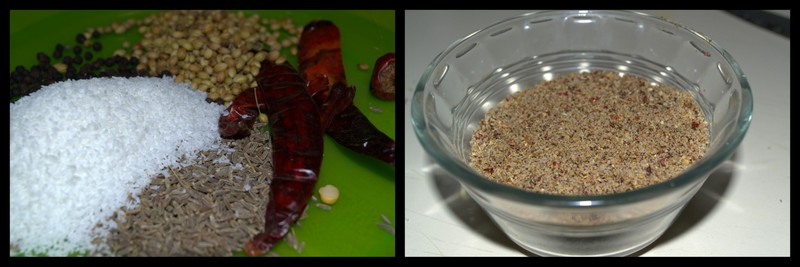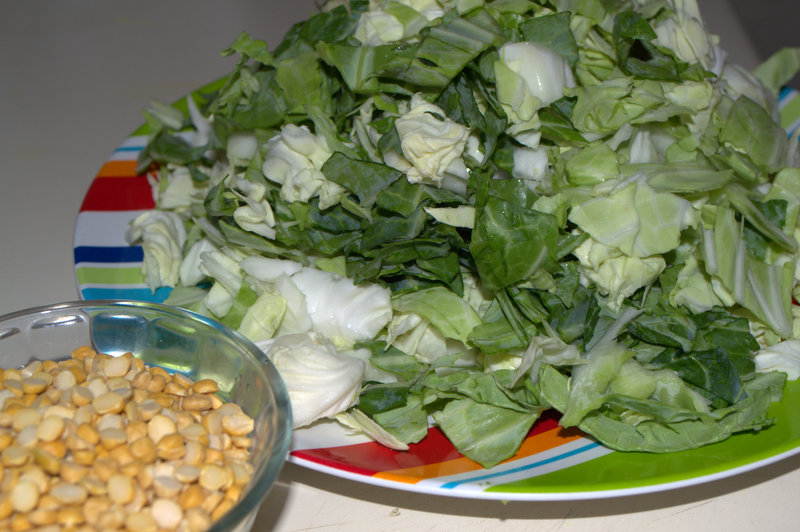We are still on the second day of Blogging Marathon #28, hosted by Srivalli, and I am back with the second recipe for my theme for this week : Kootus made in Tamil households. When planning for this theme, I pored over several previous recipes of mine and several more on the internet, but for some reason, I was not able to narrow down specific recipes that I could try out. However, two days back, I was at the local supermarket, when something caught my eye in the tomato-section. Something green, and shiny, and very tomato-like, except that it was green. Green Tomatoes, $1.99/lb, the board said. My mind did a flash-back of all the recipes that I had read in the past weeks. Yes, there was one which was made with raw-tomatoes, ThakkaliKai Kootu. I had dismissed it without a second glance, as I was skeptical about the availability of raw-tomatoes in my city. I was still doubtful, because the board said 'Green' Tomatoes and not 'Raw' Tomatoes, because where I live, it could probably be a genetically-modified version of the regular tomatoes. However, I still shelled out $2.38 for two gigantic green tomatoes and decided to try my luck with them. Well, obviously my risky-decision paid off, or I wouldn't be ranting on about this new-found vegetable on this blog. So, here goes my next entry for the BM#28, ThakkaliKai (Raw Tomato) Poricha Kootu.
Poricha Kootus are called so because the masala powder is made by roasting (Tamil : பொறிக்கறது porikkarthu) Urad Dal, Chana Dal and a number of selected spices and grinding them together. I have taken the freedom to use two ingredients that are not traditionally used in Poricha Kootu Masala : Sesame Seeds and Raw Rice, the former for imparting a nutty flavor and the latter for thickening purposes. They both added beautifully to the already flavorsome Kootu, which I ended up having with Curd Rice at 12 in the night. Yeah, Grad-School and timely dinners don't exactly go hand-in-hand.
THAKKALI-KAI PORICHA KOOTU (Serves 3-4)
Set-up Time : 15 minutes
Set-up Time : 15 minutes
Experiment Run-Time : 30 minutes
The Shopping List
Set 1: At the Chopping Board
Green/Raw Tomato : 2 medium, cut into cubes
Set 2: Poricha Podi
Grated Coconut : 1/3 cup
Raw Rice : 1/2 Tbsp
Coriander Seeds : 1.5 Tbsp
White Sesame Seeds : 1 Tbsp
Dried Red Chilies : 4 or 5
Urad Dal : 1 Tbsp
Chana Dal : 1/2 Tbsp
Set 3: Protein Base and Seasoning
Split Pigeon Peas/Toor Dal : 1/3 Cup
Mustard Seeds : 1 tsp
Turmeric Powder : 1/2 Tsp
Asafeotida : a generous pinch
Dried Red Chilies : 1, broken
Curry Leaves : 1 strand
Sesame Oil : 1 Tbsp
Salt : As required
Methodology
1. Place the Toor Dal in a pressure cooker along with 1 cup of water, turmeric powder and sufficient salt. Pressure cook the dal for up to 3 whistles. Open the cooker and mash the Dal haphazardly, with the help of a sturdy churning rod and set it aside.
2. In a pan, place the raw tomatoes, salt and little turmeric. Add sufficient water to just cover the tomato pieces. Boil for 10-15 minutes until the tomato pieces are thoroughly cooked.
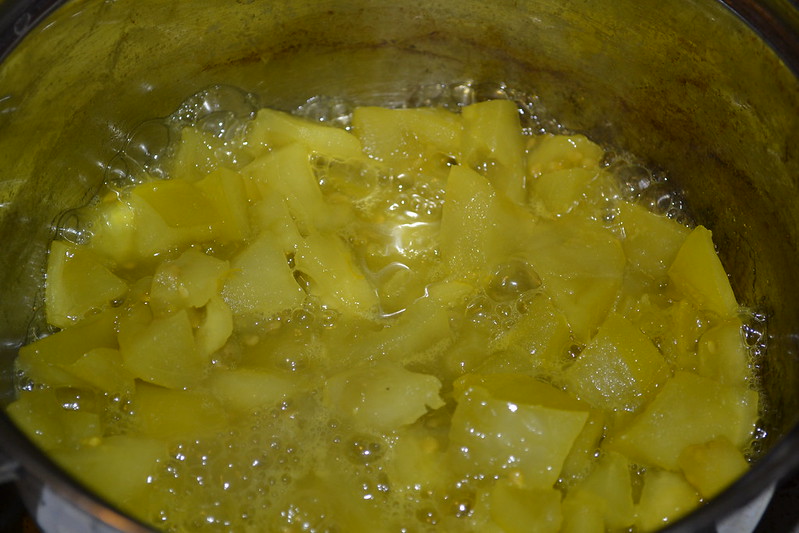
3. In the mean time, dry roast each of the first five ingredients given in Set 2, individually. Also, gently fry the dals together in a teaspoon of oil until the Urad Dal turns reddish-brown. Cool and grind them all together into a dry powder.
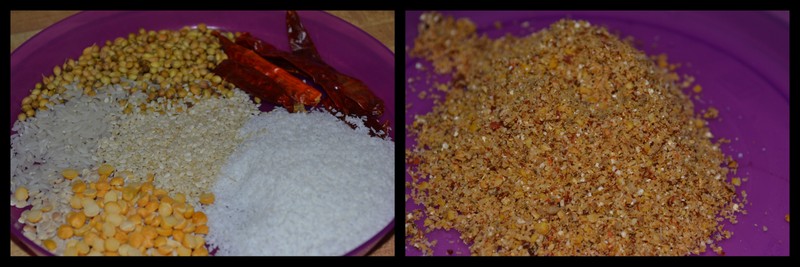
4. Add the cooked dal from step one to the cooked raw tomatoes and continue to boil the tomatoes in the dal. Water maybe added to adjust the consistency, if desired.
5. Finally, add the Poricha Podi into the boiling Kootu. Close with a lid and cook for 5 more minutes on a medium flame. You may cook more if it is too watery, but the raw rice should thicken it up nicely anyways.
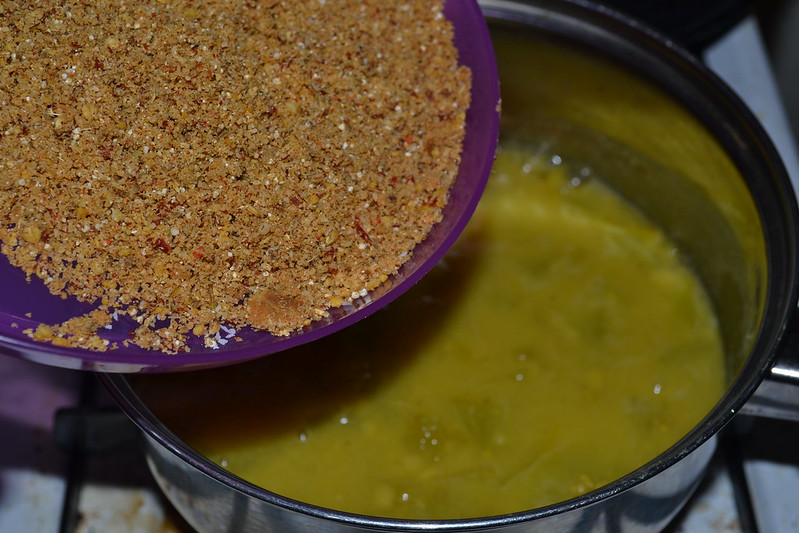
6. Heat the sesame oil in a seasoning pan and throw in the mustard seeds, asafoetida, red chilies and curry leaves. Using sesame oil would help in enhancing the nutty flavor that would be imparted by the sesame seeds in the podi. Other oils may underplay this effect and the full flavor of the podi maybe supressed. Pour the seasoning over the Kootu and serve immediately, while the aroma of the sesame oil is still in the air.
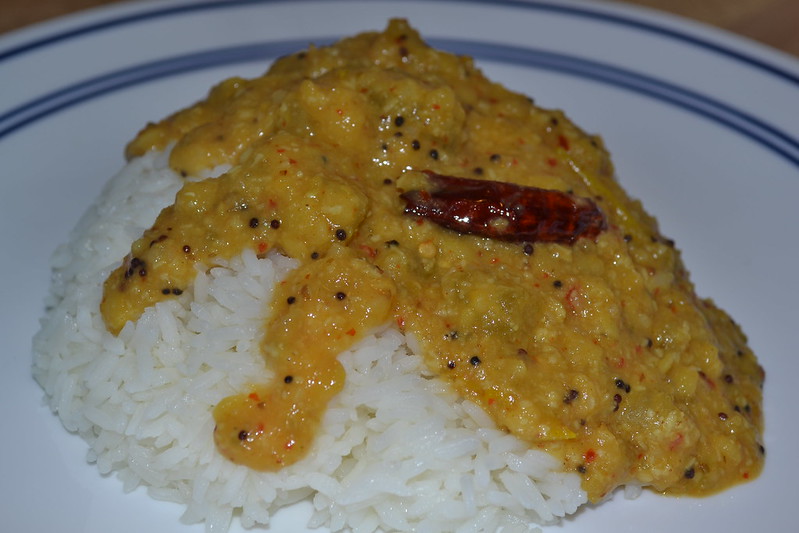
The Kootu was unbelievable and I am listing ThakkaliKai as "My Culinary Find of the Month". I plan to experiment more with it and see how well it holds up. Like I said, I had it with curd rice and some really spicy Avakkaya. HEAVEN. And that is probably what has kept me going for the past hour and half or so, as I finished cleaning up and wrote this post. Right now, it is past 3 am, and I have loads of Kootu stored away in the refrigerator for a sumptuous lunch tomorrow, and I am going to catch a good night's sleep before I get to tackle it all over again!





